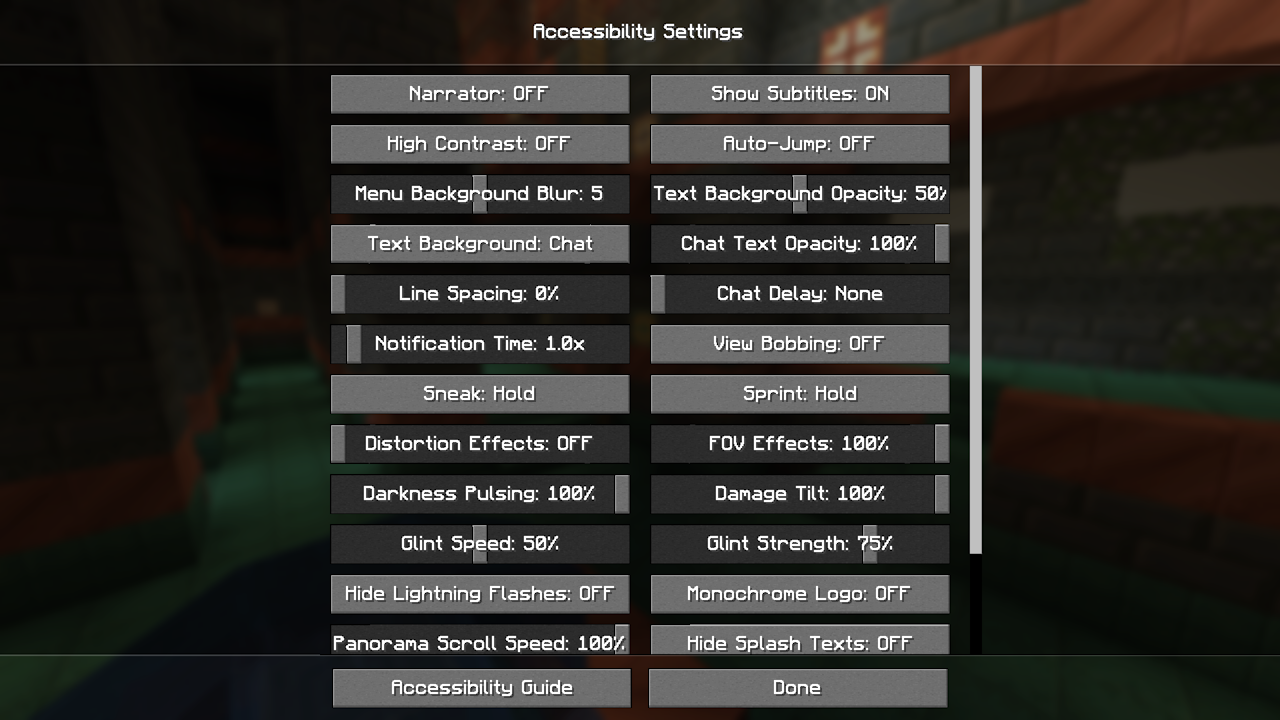
Motion Sickness Accessibility in Video Games
Updated on Jun 11, 2025 by Maddy Miller
Originally posted on Dec 28, 2024
In Games with tags Accessibility, VR
1444 words, 5 minutes to read
Motion sickness, or more specifically simulation sickness in the context of video games, is an issue that affects up to one third of people. It can vary from a mild discomfort after hours of playing, to extreme nausea or headaches after only a few minutes. Either way, it’s a problem that can impact both the enjoyment and ability for someone to play video games. What can be done about this? Is there a way we can strive to make gaming more accessible to people who suffer from the more severe forms of motion sickness?
What causes motion sickness?
At its core, motion sickness is caused by a mismatch between the movement that the brain interprets from what you see, and the movement that the brain interprets from your vestibular system (basically your sense of balance). Traditionally when people think of motion sickness, they think of something like car sickness or sea sickness. Situations where your eyes don’t see movement, but your body feels it. In the context of video games, it’s usually the other way around, where your eyes see movement, but your body doesn’t. There are some cases where the opposite can occur, such as VR headsets that have frozen or are just too slow to account for movement, but generally most video game motion sickness works that way. Due to it being most common in simulated environments, it’s also become known as simulation sickness.
Some people are more prone to severe motion sickness than others. Women are more likely to experience it than men, especially around menstruation or pregnancy. Women are actually so much more likely to experience motion sickness, that Quantic Foundry suggest’s that it’s a noticeable factor in what games and genres women play. Kids are also much more likely to experience it than adults, leading to a common belief amongst gamers that you “grow out of it” or it being a kid’s problem. There are also some medical conditions such as some migraine conditions or Parkinson’s that can increase sensitivity. For more mild cases it can sometimes be gotten over by spending more time playing, but this isn’t always possible and can be infeasible or even harmful in severe cases.
What specifically in games triggers it?
It’s difficult to pinpoint one specific aspect of games as the definitive cause of motion sickness. It varies per person and game. Common triggers can be specific field of view ranges (FOVs), screen shake or movement bobbing effects, motion blur, or large-scale repeated textures. Frame rates can also be a factor, although this one seems to vary more heavily per person. In my experience, 30-40 FPS feels like the “sweet spot” in terms of minimising the impact of these issues for me. For example, I can play Starfield at 30 or 40 frames per second, but at 60 the movement bobbing effects cause severe motion sickness. Others report that higher framerates are better for them, or that the framerate doesn't matter as long as they’re consistent.
VR is also a special case in terms of what can cause it. Frame rates are more of a factor here due to the head motion tracking. If the frame rates are too slow, your head doesn’t move in a natural way. Methods of locomotion also play a large part in this. For someone with a severe motion sickness sensitivity, any movements that they don’t do themselves can cause issues. In general, VR games are more prone to triggering motion sickness and therefore need to take more care to addressing the problem.
What can games do about this?
In general, games should provide options. This is especially relevant on consoles where you can’t always access hidden configuration files or download mods. Accessibility options should be available, and available before the game has started. While simple options such as an FOV slider, FPS targets, and ability to turn off movement bobbing are a massive first step towards tackling this issue, others such as multiple locomotion systems in a VR game might be much more involved to actually implement.
While these are the basics of motion sickness accessibility, there are many games that sadly lack even these. For me personally, the most common problem I actually experience is games not having an option to disable head/movement bob. When this happens there’s generally nothing I can actually do about it. I just give up on playing the game. Head bobbing in general is a fairly controversial effect, with some people loving it and others hating it. Even outside of an accessibility perspective, it makes sense to allow disabling such a divisive feature.
Other issues such as large-scale repeated textures aren’t even something that really belongs in an options menu either, it’s more of an inherent artistic choice. While luckily this trend has become less of a problem in recent times, it does lock many people out of playing early games due to the limited texture space. Back in 2010 I remember having to create a custom Minecraft texture pack that simplified everything and removed texture noise, to trick my brain into not developing severe nausea from a few minutes of playing. Minecraft now has significantly better accommodations for motion sickness, with options to turn off view bobbing, distortion effects, FOV effects, damage tilt, and more.

When it comes to this issue, like other forms of accessibility, the ideal solution is to care about accessibility from the ground up. This is one specific access barrier to gaming that has significantly affected me during my life, but there are other barriers that affect others. Having a more open approach to accessibility in developing a game makes a game more appealing toward people who need accessibility features. It’s better to ask yourself “does our art style trigger accessibility issues?” when you’re prototyping, rather than finding out that it’s an issue during final playtesting.
A common argument against having accessibility settings in place is that it goes against the intention of the artist. And while this is understandable, I’d rather play a game that doesn’t quite meet the designer’s vision than not play it at all. People who enable accessibility options are entirely aware that they’re receiving an altered or subpar experience, but when you need these options it’s not a choice between the full experience and the altered one. It’s a choice between an altered experience or no experience, and when we don’t have adequate accessibility settings, we’re forced to take the “no experience” option.
Some game developers, and portions of the gaming community, are also very hostile to accessibility options claiming that they provide an unfair advantage. Many years ago, I was banned from the Planetside 2 forums for asking for an option to disable the movement bobbing feature, as some friends had asked me to play it with them. The outcome of that was me not playing the game at all and having a negative perception of its developers. While a small portion of people might enable accessibility options to gain an advantage in competitive games, that brings up the question of whether the feature itself is a problem. If people feel the need to enable accessibility options to bypass a feature, it might mean that these people unknowingly actually need the option, or that the feature is not well thought out.
In competitive games, accommodations should be balanced with the core gameplay experience. Unless a game is designed around a feature like this, a feature that’s viewed purely as an obstacle that everyone would prefer gone might be worth either removing or rethinking. It’s not reasonable to provide motion sickness accommodations in a competitive VR “getting shot out of a cannon simulator” because any solution to it inherently removes the main aspect of the game. In saying that, unless your game is about the experience of someone getting shoved from side to side after every step, situations where a lack of movement bobbing provide a significant competitive advantage are a sign of a design issue.
Conclusion
Motion sickness is one of the most common yet rarely talked about accessibility issues in gaming. While accessibility has come a long way in the past few years, it feels like this aspect is still rarely addressed. There are numerous semi-recent games that I’ve not been able to play at all due to it, some of which have ironically even been applauded for making headways in accessibility. There are a few simple allowances that game developers can make to improve the experience, but an inherent focus on overall accessibility would be the ideal outcome. If you’re developing a game, please make accessibility a core foundation of your development process. At the very least, please let me disable head bobbing so I can play your game.



